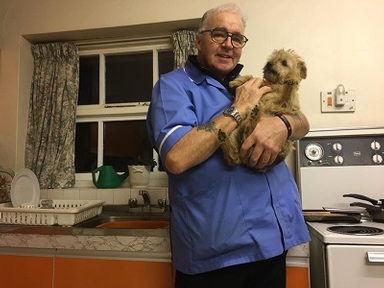The future of health care: Japanese robot can provide practical care and mobility support
An innovative and experimental nursing care robot could soon be helping the ageing population globally to stay independent in their own homes for longer.

Researchers from Meijo University in Japan have created a prototype ‘Robear’ to perform specific ‘care’ tasks, including lifting an individual from a bed into a wheelchair and providing physical assistance to help a patient to stand.
Leader of the robot research team, Dr. Toshiharu Mukai, said: "We really hope that this robot will lead to advances in nursing care, relieving the burden on care-givers today. We intend to continue with research towards more practical robots capable of providing powerful yet gentle care to older people."
More than a quarter of Japan's population is aged over 65, and along with many countries with a rapidly ageing population, there is an urgent need for new approaches to assist care workers.
Japanese Prime Minister, Shinzo Abe, allocated 2.39 billion Yen (£14.3 million) in the 2013 budget for researchers to create robots to provide assistance within the home care sector.
As part of the funded research, the new ‘Robear’ prototype has been developed by the RIKEN-SRK Collaboration Center to provide mobility support for residents living in their own accommodation.
According to new research conducted by Meijo University, one of the most strenuous tasks for care workers, carried out at an average of 40 times per day, is that of lifting an individual from a bed into a wheelchair, which has become a major cause of lower back pain.
The robot prototype has been designed to carry out the simple mobility functions to relieve care workers from the physical strains when manoeuvring older people, as well as being lighter than its predecessors. This enables the robot to incorporate a number of features that allow it to exert force in a gentle way.
The robot also incorporates three types of sensors which allow for gentle movements, ensuring that the robot can perform power-intensive tasks without endangering the individual.
To avoid falling over, ‘Robear’ has a stable and adaptable structure. The robots legs can be extended when necessary for lifting an individual, but can also be retracted to allow the robot to manoeuvre through tight spaces such as doorways.
Although the estimated cost of the Robear is ¥20-30 million (between £110,000 and £166,000), researchers hope the price will decrease to reasonable levels within the next 20 to 30 years.
‘Robear’ still requires further research and design improvements, however researchers believe it is a viable long-term approach to support both older people and staff within the care sector.
Dr. Mukai concluded: “It’s a robot conceived with a focus; while it’s only meant to carry out a few tasks, it’s designed to do them with minimal friction and maximal efficiency.”
Latest Innovative Care News
 13-May-19
'Pink drink' brain cancer treatment rolled out across NHS in memory of Baroness Jowell
13-May-19
'Pink drink' brain cancer treatment rolled out across NHS in memory of Baroness Jowell
 25-Apr-19
Louis Tomlinson helps 83-year-old who lost wife to dementia complete bucket list
25-Apr-19
Louis Tomlinson helps 83-year-old who lost wife to dementia complete bucket list
 05-Mar-19
Care worker of the year inspires nine-year-old son to work in care
05-Mar-19
Care worker of the year inspires nine-year-old son to work in care
 12-Feb-19
Michael McIntyre's jokes tested to see if they stop elderly catching flu
12-Feb-19
Michael McIntyre's jokes tested to see if they stop elderly catching flu
 25-Jan-19
Ninety-year-old and his dog can stay together, thanks to care worker
25-Jan-19
Ninety-year-old and his dog can stay together, thanks to care worker